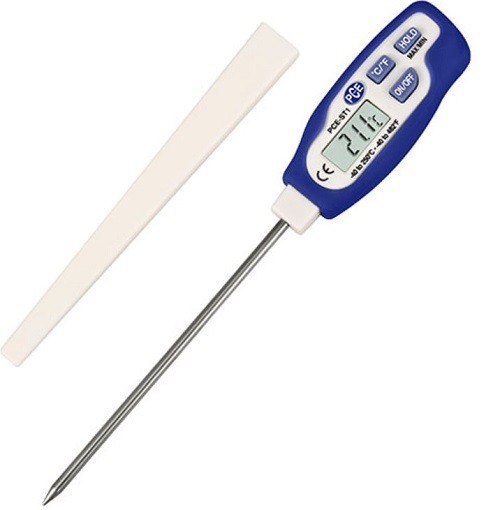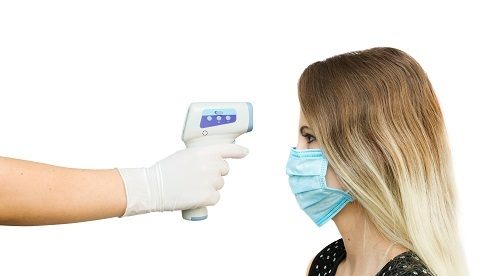Understanding the distinction between contact and non-contact temperature measurements is very important in addressing safety, health, and quality problems.
The use of thermometers to determine temperature has been around for centuries, and it's the most often measured physical quantity after time. There have been various types available to the public including contact and non contact thermometers.
Various fields, including mechanical, manufacturing, medical, quality management, and maintenance, based on precise temperature measurements.
They provide essential information such as the condition of a machine, monitor the performance of an air conditioner or refrigerator , and help decide if icing conditions exist in agriculture and aircraft.
Precise temperature monitoring assures that procedures work consistently under optimum conditions--leading to reduced downtime and improved product quality, increased safety, and higher productivity.
Thermometers are divided into two categories: non-contact and contact.
In contact thermometers, sensors check their own temperature. Contact thermometers monitor the temperature with the heat transfer phenomenon called "conduction." They need physical contact with the quantified object to bring the sensor body to the object's temperature.
While in non-contact measurements, an IR sensor is used to assess an object's temperature by studying the level of infrared emissions.
From the perspective of application benefits, the non-contact infrared thermometer is superior compared to the contact-type thermometer.
Considering the price performance, a non-contact infrared thermometer is advised.
Although the Non-contact thermometer's price is higher than the contact-type thermometer, the non-contact thermometer saves manpower and has less loss, material resources, and financial resources.
Contact Thermometers

Contact thermometers are classified depending on the sensor type used for its measurement, i.e., the resistance temperature detector (RTD), thermocouple, or thermistor.
Choosing the appropriate sensor type is the first important step and depends mostly on the application and other factors such as cost, size, and accuracy. Most applications have size limitations, accuracy requirements, and a wide measurement range.
Thermocouples are the most widely used sensors due to their low cost and broad temperature range. Applications like oven surface dimensions, bedbug extermination, food/meat processing, etc. do not need the highest accuracy, and thermocouples are an ideal fit.
Various probe styles and penetration, such as gas, general-purpose, can be found on the market and need to be chosen based on the application's requirements.
Many applications in healthcare solutions, fluid temperature measurements, and medical research need higher accuracy, which implies RTD/thermistor sensors are often required in those areas.
RTD/thermistor sensors aren't only more accurate than thermocouples but more expensive. The broader temperature range thermocouples offer sacrificed for accuracy.
RTDs are among the most precise temperature detectors available, with measurement uncertainties of ±0.1 °C or better. The most popular RTD type is your 100 Ω Platinum RTD.
Contact-type thermometer
- Contact temperature measurement can influence the temperature field of measured objects.
- The contact-type thermometer is not fit for measuring transient temperature.
- It can not bed used for measuring moving objects.
- Insufficient measuring width and absorbing materials.
- It is not suitable for measuring critical events such as toxic or high pressure.
Non-Contact Thermometers

Non-contact thermometers also referred to as infrared (IR) thermometers, test temperature from a distance.
Every kind of matter with a temperature over absolute zero (0 K) releases infrared radiation relative to its temperature. This is known as characteristic radiation.
The emissivity of a substance is the relative ability of its surface to emit energy by radiation. By identifying the amount of infrared energy released by the object and its emissivity, the object's temperature can be measured most of the time.
IR thermometers indicate temperature by measuring the amplitude of IR energy being released from the surface.
Recent innovations have reduced manufacturing costs and increased the reliability of the non-contact thermometers, opening the doors to many new applications.
Four primary factors--application, instrument precision, budget, and safety --help determine which sort of non-contact temperature measurement tool should be used.
The most common infrared thermometer kinds are infrared scanning systems, spot infrared thermometers, and infrared thermal imaging. The last two are more complicated and expensive than spot infrared thermometers and are primarily used in quality monitoring of manufacturing processes.
Non-contact infrared thermometer
- Non-contact temperature measurement has no impact on objects.
- The thermometer detects the surface temperature of objects.
- Fast response, it can quantify moving temperature and objects.
- Non-contact infrared thermometers have a broad measuring range.
- It features high measurement accuracy and small resolution.
- It can measure temperature in a small area.
- Temperature measurement can be performed on the dot, line, and surface.
- Measure both relative temperature and absolute temperature.
Comparison
It's essential to look at many different factors before making a thermometer choice.
Applications- Many factors influence the choice of the Appropriate temperature measurement tool for a particular application. Physical factors include:
- Target temperature range
- Ambient temperature
- Target material
- Interfering gases
- Target size
- Target distance
Infrared thermometers facilitate the measurement of moving components.
Rather than judging whether it's safe to work on machines, machines, the temperature of devices can be detected while operating. There's absolutely no impact on the surface of the object and not any chance of contamination.
Measurement without process interruption may be significant in specific applications, and IR thermometers are a much better match than conventional thermometers in these instances. Yet, keep in mind that IR thermometers determine only the surface temperature.
Food processing applications like measuring the temperature of meat, tracking multiple factors in a heated room, closed containers, or a hot oven surface measurement need making physical contact.
In high-temperature applications, such as bedbug extermination, which may require reaching 150-160 °F, a probe can be placed and tracked over an extended period.
Continuous data collection and temperature monitoring are essential in specific applications, which can be achieved with contact thermometers.
By way of example, a thermometer with Wi-Fi or Bluetooth connectivity may capture the temperature information and send it to a smartphone or a PC for analysis.